Building on a Mission: 60 Years Ago, the Manned Spacecraft Center Makes Houston its Home
Following the Sept. 19, 1961, announcement that NASA had selected Houston as the site of the new Manned Spacecraft Center, work began almost immediately to find temporary office space for the hundreds of workers while the facility was being built. By early October, a NASA advance team secured temporary office space to begin the transition from NASA’s Langley Research Center in Hampton, Virginia. While architects designed and construction workers built the main center in Clear Lake, by June 1962, NASA employees settled into 13 temporary facilities throughout southeast Houston. Many of those buildings still stand — a permanent testimony to the early history of NASA’s Johnson Space Center. Once the employees moved onto the Clear Lake site, an open house in June 1964 allowed the public to see the activities of the Manned Spacecraft Center.
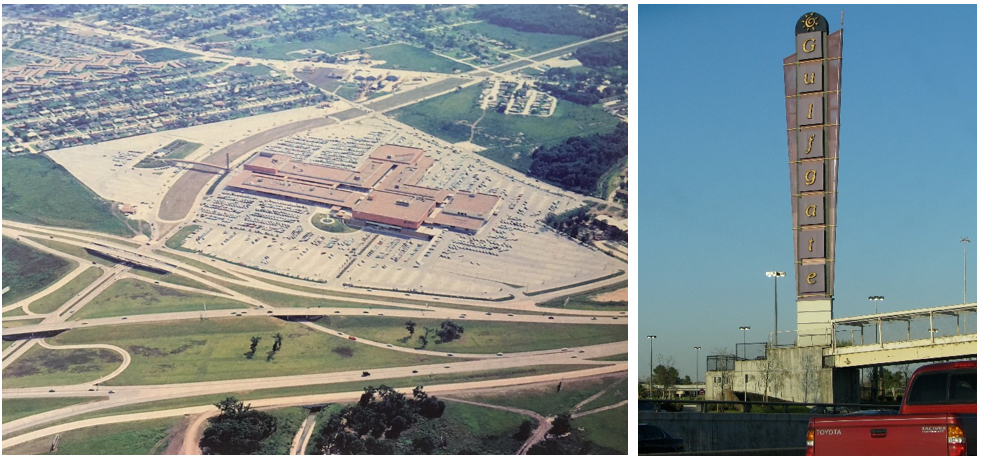 Left: The Gulfgate Shopping City in the early 1960s, where the Manned Spacecraft Center first opened temporary offices. The Gulf Freeway runs along the bottom of the image, while the 610 Loop Freeway at top exists only as feeder roads that end at the shopping center. Right: The Gulfgate sign is what remains of the original shopping center torn down in 2001 to make way for a new strip shopping mall.
Left: The Gulfgate Shopping City in the early 1960s, where the Manned Spacecraft Center first opened temporary offices. The Gulf Freeway runs along the bottom of the image, while the 610 Loop Freeway at top exists only as feeder roads that end at the shopping center. Right: The Gulfgate sign is what remains of the original shopping center torn down in 2001 to make way for a new strip shopping mall.
A NASA advance team arrived in Houston and, on Oct. 2, 1961, secured temporary offices in the Gulfgate Shopping City located on the Gulf Freeway, about five miles southeast of downtown. Their next tasks included finding adequate office and laboratory space for lease to handle the wave of engineers relocating to begin work in Houston, with the main site in Clear Lake still on the drawing board. Over the next few months, the need to house an ever-expanding workforce led NASA to lease temporary space in more than a dozen facilities in southeast Houston. Between December 1961 and July 1962, when the transfers were completed, about 750 employees relocated to Houston, and the workforce kept increasing after that. The Manned Spacecraft Center, officially open for business in Houston on Nov. 1, 1961, was spread out over 13 separate buildings, some housing as few as 46 employees, with the largest 389. Most of the buildings are still standing today, repurposed over the years into various public and private uses, lesser known reminders to the earliest days of NASA’s Johnson Space Center.
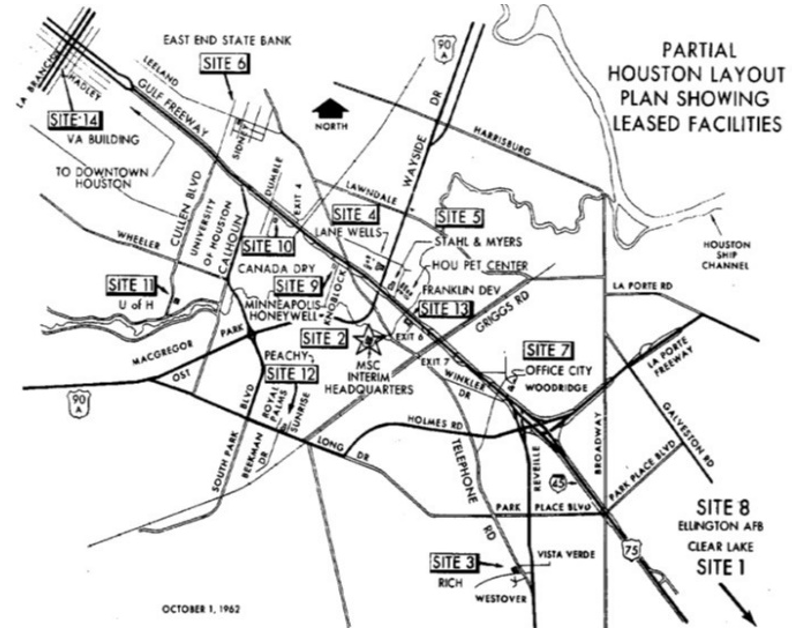
Map of southeast Houston showing the locations of the temporary sites used by NASA’s Manned Spacecraft Center while the Clear Lake center (Site 1) was under construction.
 Left: The Farnsworth & Chambers Building (Site 2) at 2999 S. Wayside Drive serves as temporary headquarters for the Manned Spacecraft Center. Middle: The building today is the headquarters of the Houston Parks and Recreation Department. Right: A NASA meatball logo and other historical artifacts are displayed in the building’s lobby.
Left: The Farnsworth & Chambers Building (Site 2) at 2999 S. Wayside Drive serves as temporary headquarters for the Manned Spacecraft Center. Middle: The building today is the headquarters of the Houston Parks and Recreation Department. Right: A NASA meatball logo and other historical artifacts are displayed in the building’s lobby.

Left: The sign in front of the Farnsworth & Chambers Building, with Manned Spacecraft Center Director Robert R. Gilruth (fourth from left) and six of the seven Mercury astronauts in 1962. Right: The same sign today bearing the name of the Houston Parks and Recreation Department.
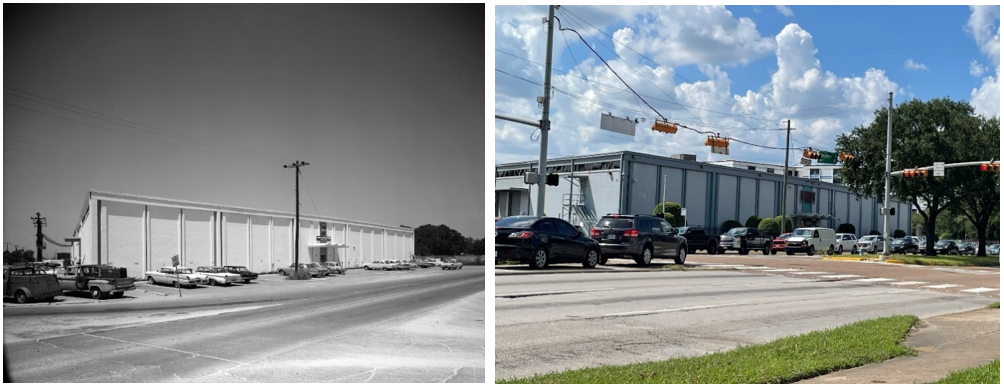
Left: The Rich Building (Site 3) at 6040 Telephone Road housed the Flight Systems Division of the Manned Spacecraft Center. Right: The same building in 2021, home to the Ambox Corporation.
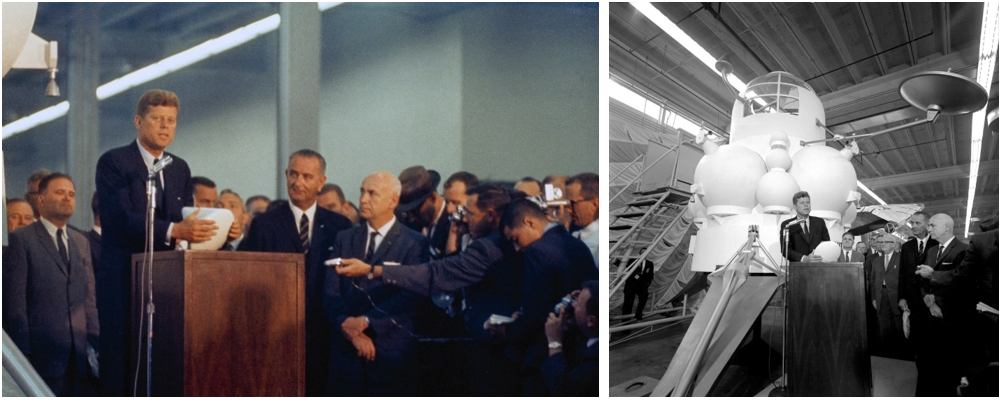
Two images of President John F. Kennedy during his visit to the Manned Spacecraft Center’s Rich Building on Sept. 12, 1962, the same day he spoke to a crowd of 40,000 people at Rice Stadium, where he uttered the famous quote, “We choose to go to the Moon, and do the other things, not because they are easy … but because they are hard.”
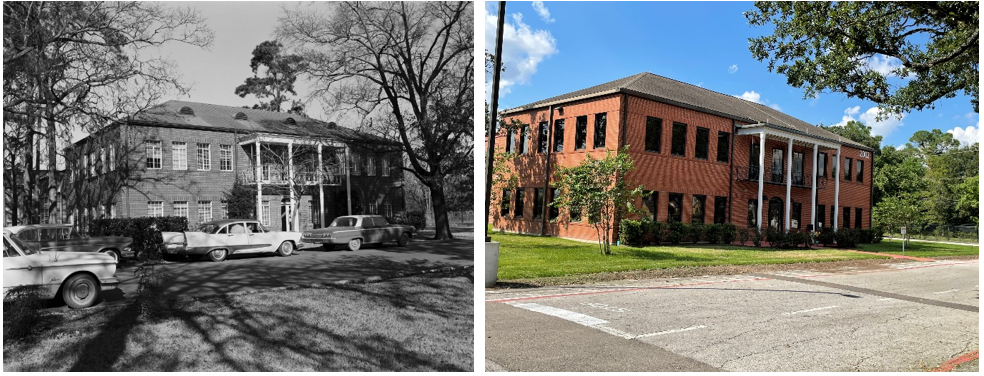
Left: The Lane-Wells Building (Site 4) at 2002 Wayside housed the Manned Spacecraft Center’s Life Sciences Division and contained facilities for testing spacesuits. Right: The same building in 2021, home of Christus St. Mary’s Clinic.
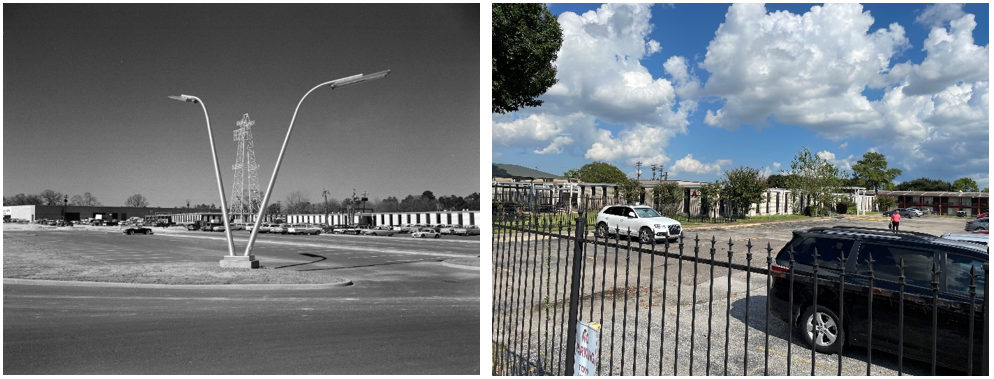
Left: The largest of the facilities, the Site 5 complex on the Gulf Freeway, including the Stahl & Myers Building and the Houston Petroleum Center Buildings, housed the Flight Operations Division of the Manned Spacecraft Center. Right: Most of the complex has been demolished, with only one building remaining at 6001 Gulf Freeway.
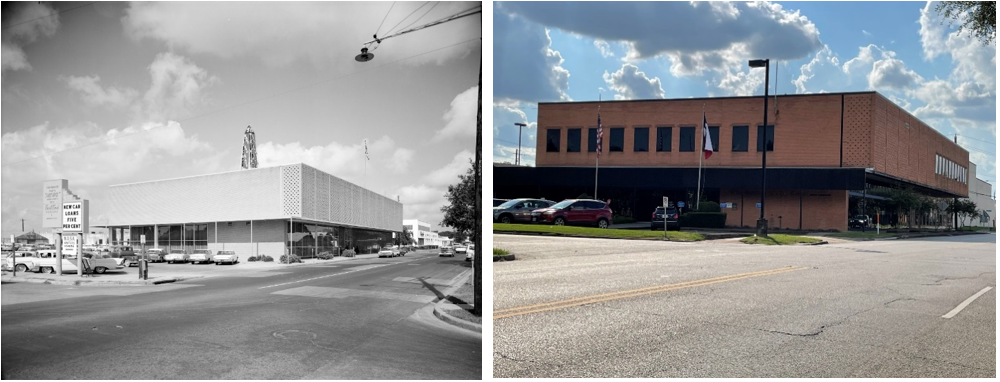
Left: The East End State Bank Building (Site 6) at 4200 Leeland St. housed the Manned Spacecraft Center’s personnel offices and the NASA Credit Union. Right: Today, the building is the home for the City of Houston Utility Customer Service.
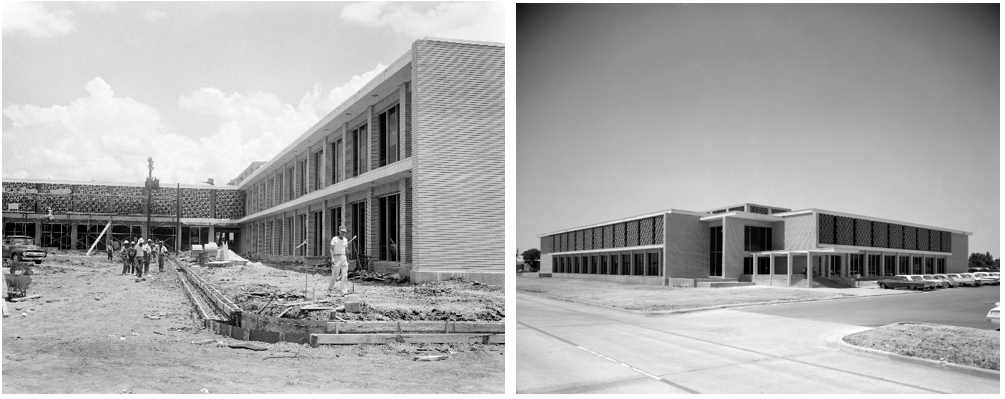
Left: The Office City complex (Site 7) under construction off the Gulf Freeway in 1962. Right: The newly completed complex in 1963 housed the Manned Spacecraft Center’s Flight Crew Operations Division. The building has since been torn down.
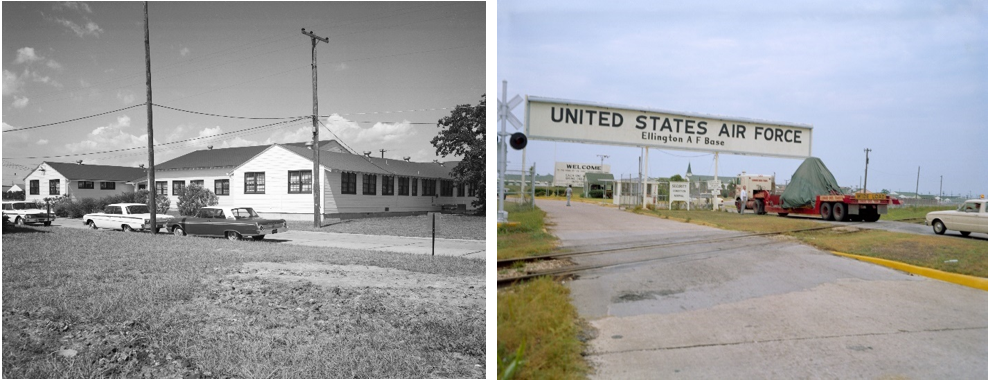
Left: Ellington Air Force Base (Site 8) housed procurement, financial management, photographic services, and supply for the Manned Spacecraft Center. Right: Ellington also handled aircraft operations and the delivery of spacecraft mock-ups, such as the Apollo Command Module that arrived in August 1962.
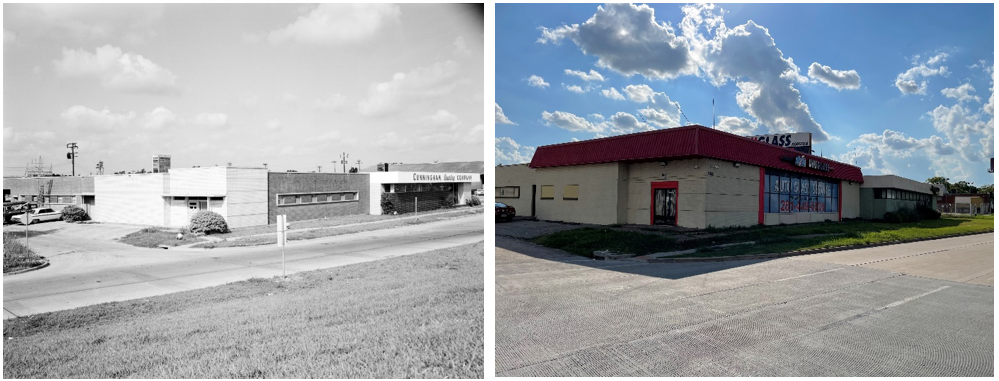
Left: The Minneapolis Honeywell Building (Site 9) at 5440 Gulf Freeway housed the Manned Spacecraft Center’s Public Affairs Office. Right: The building today houses an auto glass service store.
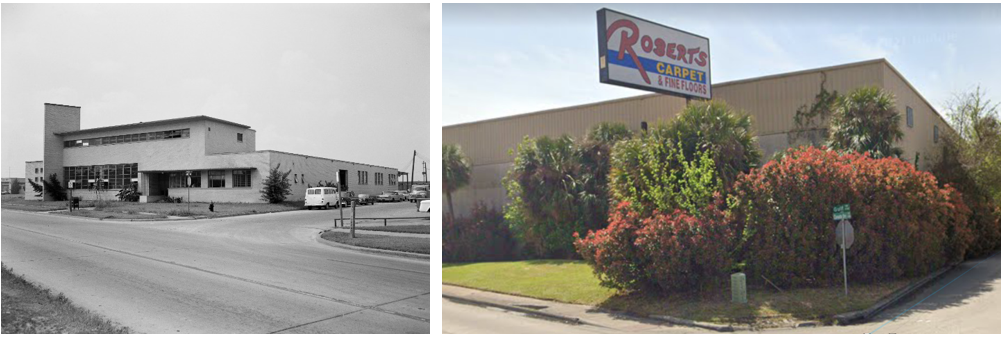
Left: The Canada Dry Building (Site 10) 4750 Gulf Freeway housed the machine shop for the Manned Spacecraft Center’s Technical Services Division. Right: A furniture store stands on this site today. Credits: Google Maps
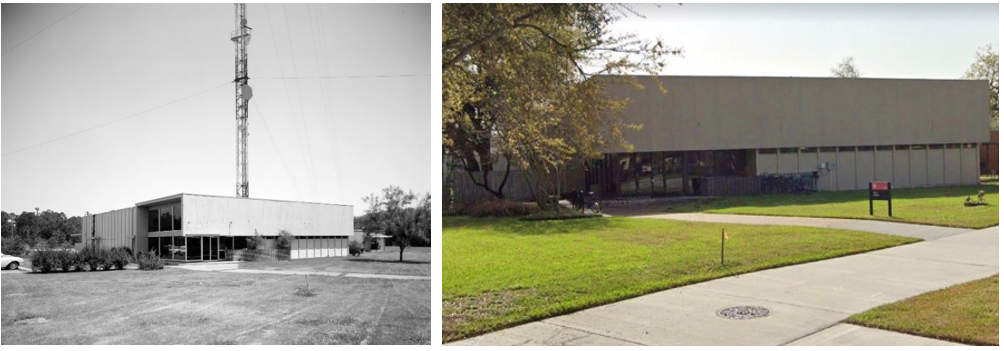
Left: A building (Site 11) at 4513 Cullen, on the University of Houston campus, housed the Manned Spacecraft Center’s Data Computation and Reduction Center. Right: The same building on the university’s campus today. Credits: Google Maps

Left: The smallest of the facilities, the Peachy Building (Site 12) at 5513 Griggs, housed the Manned Spacecraft Center’s Facilities Division. Right: In recent years, the abandoned building had fallen into disrepair and was torn down in 2021. Credits: Google Maps
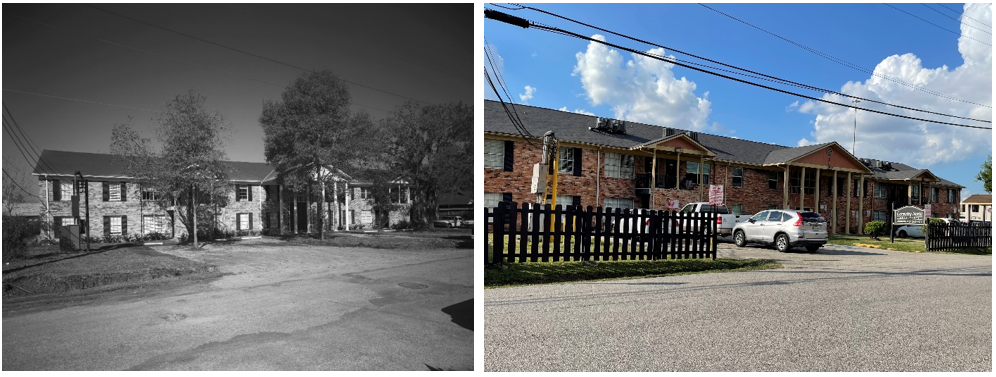
Left: The Manned Spacecraft Center used four of the six apartment buildings in the Franklin Development Complex (Site 13) at 2510 Beatty Street near the Gulf Freeway. The Flight Crew Operations Division and the Technical Information Division relocated to this facility. Right: Today, the complex is called the Coventry North Apartments.
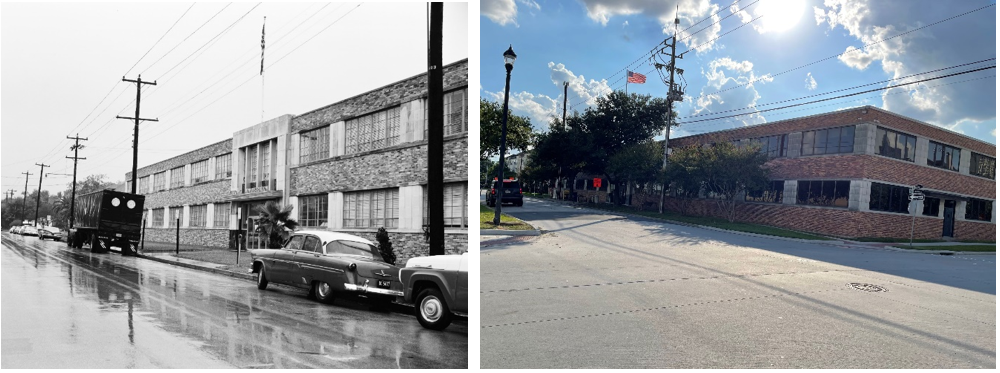
Left: The Manned Spacecraft Center’s Site 14, the Veterans Administration Building at 2320 LaBranch, housed the Gemini Spacecraft Project Office and later the Reliability and Flight Safety Office. Right: Today, it is a federal building housing a child development center and the Federal Railroad Administration.
As Manned Spacecraft Center employees settled into their temporary offices and continued the work of the agency’s human spaceflight program, which included flying Mercury orbital missions and planning for the future Gemini and Apollo programs, work proceeded on Site 1, the main center in Clear Lake. Plans for the center assumed a challenging schedule of a six-month design phase and 18 months for construction. The $60 million initially appropriated to build the center was not enough to complete construction, and additional incremental funding was required in subsequent years.
Initial groundbreaking took place on April 2, 1962, beginning with site preparation and utility work, with actual construction of the buildings starting in September. The first structures included the Central Data Office (Building 12), the water treatment plant (Building 322), the central steam and chilled water plant (Building 24), and the fire station (Building 25). Construction of the main office and laboratory buildings began in December. The first employees, the Technical Services and Logistics Divisions, moved onto the site in late 1963. And, on June 6, 1964, the Manned Spacecraft Center held its first open house to showcase the new facility to the public.
 Aerial views of the Manned Spacecraft Center in Houston, now NASA’s Johnson Space Center, under construction in December 1962, September 1963, and June 1964. Credits: NASA
Aerial views of the Manned Spacecraft Center in Houston, now NASA’s Johnson Space Center, under construction in December 1962, September 1963, and June 1964. Credits: NASA
To be continued …







